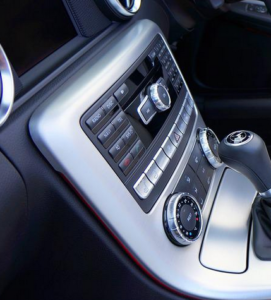As summer gets underway, you and your family may be planning outside activities from that backyard summer BBQ to taking in a summer baseball game. Whatever you may be planning, you can have peace of mind that when you get back in the car to drive home – your AC will be ready to cool you off as you head home. That wasn’t always the case when it came to driving and AC – just under a century ago, cars were just being invented and AC was not even a thought in anyone’s mind. If you have some questions about the history of cars and AC, then keep reading as we answer some common questions.
How did drivers of the very first vehicles keep cool in the summer?
The earliest Model T’s had no doors and a collapsible roof. Most drivers back then were more concerned about keeping warm in the winter instead of keeping cool in the summer. When drivers wanted to cool off, they would simply collapse the roof and let the open air cool them off.
What happened when car makers started adding doors and a more permanent roof?
Shortly after the first Model Ts, car makers began to make closed-body vehicles with doors and windows. At this time, they would still use open air to cool them off, but these cars came equipped with vents under the dashboard that circulated the outside air. The one complaint consumers had about this is that it didn’t keep dirt and dust from getting inside the car – it was kind of messy.
What were the first innovations toward the AC we know today?
Next came some primitive cooling options for drivers and passengers. The Knapp Limo-Sedan Fan was introduced which was an electric fan mounted to the interior of the car which would blow on car passengers to keep them cool. In addition, car owners could purchase a car cooler which was attached to the roof and used water evaporation to cool air that came through the open windows. While getting more comfortable in the summer, this system was only able to reduce the car temperature by 15 degrees.
When were drivers able to purchase a car with a factory installed AC?
Good question. In the 1940s, Packard became the first car maker to offer factory installed AC. The unit was installed in the trunk of the car and required the driver to get out and manually install or remove the drive belt from the compressor to turn on and off. This unit could only circulate air inside the car, and the condensed water ran overhead which could drip on car passengers from time to time.
When did air conditioning become standard for new cars?
Before World War II, only 3,000 cars had an AC system installed, but after WWII over 1 million cars had it installed. In 1953, General Motors, Chrysler, and Packard all introduced new AC systems. More specifically, GM developed a revolutionary system that fit in a car’s engine. In 1963, Cadillac made a breakthrough with the invention of comfort control – drivers were finally able to control the temperature in their car.
Were there any concerns environmentally with these new advances?
In the 1970s, scientists discovered that compounds called Chlorofluorocarbons (CFCs) were depleting the earth’s ozone layer. The primary AC refrigerant used in cars at that time was R12, also known as Freon, which was a CFC. Scientists knew that a new and safer option needed to be developed. After years of testing, a suitable replacement was found in the refrigerant known as R-134a. In 1987, the U.S. government signed the Montreal Compact, which in part required manufacturers to switch away from R12 by 1996.
Are there any modern-day environmental concerns because of the AC?
Today, our vehicle AC systems are highly advanced with dual and rear climate control. And while we don’t have the environmental concerns we had in the 1970s, using your AC decreases your fuel efficiency by up to 25%. Some simple tips to be more fuel efficient when using your AC include: using your AC only when you’re driving at highway speeds, not idling with your AC turned on, and rolling down your windows to let the hot air out before turning on your AC.
We’ve definitely come a long way when it comes to having the modern convenience of air conditioning while we drive, but it’s always important to have your AC checked to make sure it’s in working order before the dog days of summer arrive. If it’s been a while since you’ve had your mechanic run an AC system check, we’d love to help. Simply give us a call and we’ll ensure your AC is ready to go no matter where you drive to this summer.

